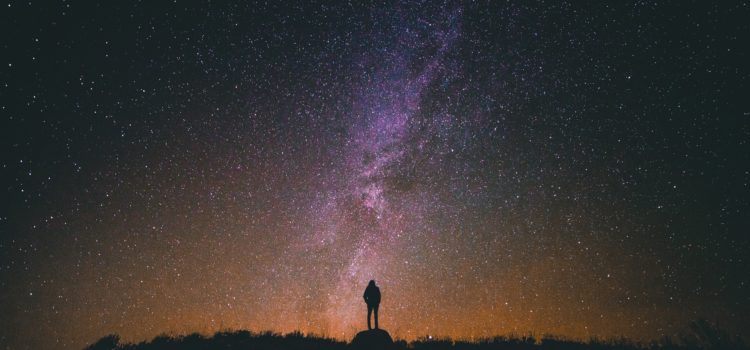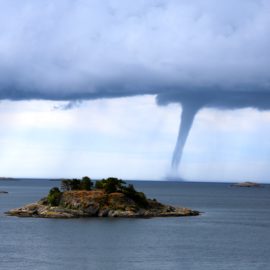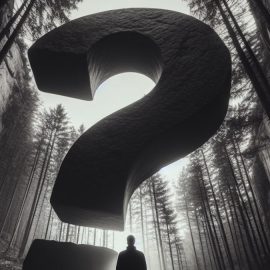

This article is an excerpt from the Shortform book guide to "A Brief History of Time" by Stephen Hawking. Shortform has the world's best summaries and analyses of books you should be reading.
Like this article? Sign up for a free trial here .
Is the universe finite or infinite? Does the cosmos extend forever or does it have a boundary?
The universe is always in the state of expansion but it cannot be infinite. In an infinite (and static) universe, every point of observation would arrive at a star (because there would be an infinite number of stars), but this is clearly not the case (this is known as Olbers’ paradox or the “dark night sky paradox”).
Here is why our universe cannot be infinite.
Finite vs. Infinite Universe
For most of human history, people could only conceive of two possible states of existence for the universe. The first was that it had always existed, in an eternal, unchanging state. The second was that it had been created at a finite point in time. So, which of these ideas is true? Is the universe finite or infinite?
In reality, neither. Those ideas were informed by religious and theological concepts that put God or some other deity in the role of a Creator. The idea of a dynamic, and possibly even expanding, the universe did not yet exist.
But logic and observation confounded the idea of a static, eternal, infinite universe. In 1823, the German astronomer Heinrich Wilhelm Olbers made the point that in an infinite and static universe, every point of observation would end in a star, because there would be an infinite number of stars. The sky should be blinding white light with nothing else visible. Obviously, this is not the case.
The only way around this is to assume that the stars were activated at some fixed point in time—that the universe isn’t eternal and, instead, had some definite beginning. The reason we see a dark night was that the light from some stars hadn’t reached Earth yet. This was a major blow to the idea of a static, eternal, and infinite universe—there must have been a time before the stars.
Red-Shift, the Expanding Universe, and the Beginning of Time
Olbers’ work pointed the way toward a concept of the beginning of the universe. Of course, the idea of time itself has been debated by philosophers and theologians since the beginning of recorded history. Did the universe have a beginning? What came before it? And could the concept of time exist independently of the universe, or was it instead a property of the universe that only came into being with the creation of the universe itself?
It turns out that the color of the light that we see from the stars tells us some important things about the nature of the universe. What we see as different colors of light from a star are actually different wavelengths (the distance between the crests or peaks of individual light waves) of the light that reaches us.
The longest wavelengths (that is, for stars furthest away from us) and lowest frequencies show up on the red end of the spectrum, whereas the shortest wavelengths and highest frequencies present on the blue end of the spectrum. This is because at longer distances, the light is “stretched.” At shorter distances, the wavelength is shorter, and the light becomes “crunched.”
If a galaxy we were observing remained at a constant distance relative to us, we would expect the light that reaches us to remain at a constant wavelength. But if its position was changing relative to us, we would expect the wavelengths to change as well. In 1929, the American astronomer Edwin Hubble observed that the light from every observable galaxy was shifting to the red end of the spectrum. The wavelengths were getting longer. The galaxies were moving away from us. This phenomenon is known as red-shift.
Moreover, they were not moving at a constant rate. The further away they were, the greater the red-shift. The furthest galaxies were moving the fastest! The universe could not be static and infinite—it had to be finite and expanding (because if it’s expanding, there has to be some boundary at the edge of expansion, something that lies beyond the universe). And it had to be expanding above a certain rate in order for it to “beat” the forces of gravity—otherwise, the universe would begin to contract due to gravity. This concept is not dissimilar to a rocket’s escape velocity: A rocket has to be traveling fast enough to escape Earth’s gravitational pull and make it into orbit.
And if it was in a state of expansion, this meant that there must have been a time before the initial expansion (the initial expansion is known as the Big Bang) when it was infinitesimally small. Before the Big Bang, the concept of time would have had no meaning or relevance. There’s no way to observe this state of existence (if it can even be called that), because all observable things were created at this moment in time with the Big Bang. Before it, the laws of physics did not exist. There’s no theory to predict what the pre-Big Bang state of affairs was like, because predictability itself breaks down before this point.

———End of Preview———
Like what you just read? Read the rest of the world's best book summary and analysis of Stephen Hawking's "A Brief History of Time" at Shortform .
Here's what you'll find in our full A Brief History of Time summary :
- The search for a theory that explains the history and evolution of our universe
- Stephen Hawking's discussions about time, space, dimensions, and quantum theory
- How time travel would theoretically work






